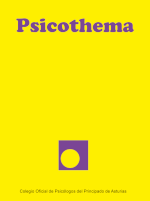Abstract
Background: Aversive control techniques involve aversive stimuli to generate behavioral change. The purpose of this work is to analyze the use of verbal aversive control by psychologists during the clinical interaction, combining respondent and operant explanations. Method: observational methodology is used to analyze 26 session recordings of three different cases of anxiety disorder, relationship problem and low mood problem (27h 32’) carried out by two psychologists of the Therapeutic Institute of Madrid. The variables considered were psychologists’ aversive and non-aversive verbalizations and clients’ antitherapeutic verbalizations. Results: there is a strong relationship between clients’ antitherapeutic verbalizations and psychologist’s aversive verbalizations, both potential punishments (aversive verbalizations contingent on the client's response) and aversive pairings. Additionally, the possible psychologists’ aversive verbalizations are accompanied by other verbalizations aimed to induce clients’ non-problematic behaviors. Conclusions: This work opens a new way to an explanation of therapeutic change using learning processes (both respondent and operant conditioning) that take place through verbal interaction in clinical context.Downloads
Download data is not yet available.
